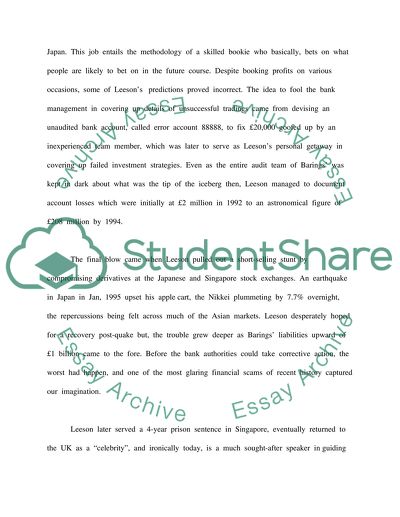Cite this document
(“Analysing operational risk failure of Barings bank Essay”, n.d.)
Retrieved from https://studentshare.org/miscellaneous/1514686-analysing-operational-risk-failure-of-barings-bank
Retrieved from https://studentshare.org/miscellaneous/1514686-analysing-operational-risk-failure-of-barings-bank
(Analysing Operational Risk Failure of Barings Bank Essay)
https://studentshare.org/miscellaneous/1514686-analysing-operational-risk-failure-of-barings-bank.
https://studentshare.org/miscellaneous/1514686-analysing-operational-risk-failure-of-barings-bank.
“Analysing Operational Risk Failure of Barings Bank Essay”, n.d. https://studentshare.org/miscellaneous/1514686-analysing-operational-risk-failure-of-barings-bank.


